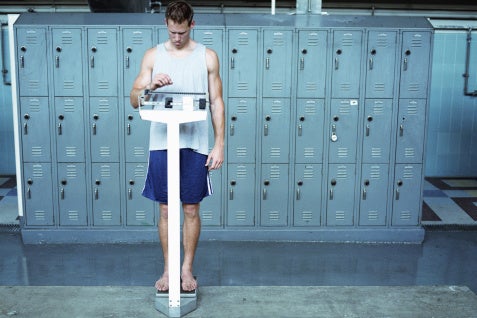
The restaurant had been particularly busy that night, and I was starving. At the time, I was working as a server to put myself through grad school in a whimsical little eatery where the joke was that “in order to be hired, you have to at least be a little curious.” As the night slowed, I wandered downstairs to the kitchen in search of some abandoned nosh, and as I stood in the hallway munching on some chips, one of my coworkers walked by, ran his hand seductively across my waist, and instructed me to remember that “straight skinny is gay fat” with a judgmental glance at my deep-fried snack.
Such is the body conscious world of gay men. Our subculture teems with adages like this one that declare our allegiance to the gods of Youth, Physique, and Sex. “Straight skinny is gay fat.” “No fat, no fem.” “Twenty-five is the new forty-five.” These phrases represent the pervasive undercurrent of unrealistic body norms and expectations that runs rampant and unchecked in the gay community, surfacing with every shirtless bartender’s chiseled pecs, every headless six-pack flaunting itself on Grindr, and every media portrayal of a gay man as the modern-day Adonis. Physical appearance has indeed become a central factor to the contemporary gay man’s sense of self, and we are beginning to crack beneath the burden of its expectations.
According to the research literature, gay men display significant rates of body dissatisfaction, body image disturbances, and disordered eating behavior to a degree that closely aligns with those of straight women. Gay men are more likely to diet, fast, vomit, and over-exercise to alter their physique, and a gay sexual orientation has been identified as a specific risk factor for eating disorders in men.
And, to be fair, we come by our physical preoccupation naturally. Historically, appearance cues have always been the medium gay men have used to identify each other, and as a minority group, gay men face the challenge of being socialized into the majority culture’s masculine muscle ideologies, while also balancing the expectation of thinness within the subculture. Individuals who are sexually involved with men, furthermore, tend to be more focused on appearance due to the common belief that men place higher priority on a partner’s physical form than women.
What this seems to have developed into, however, is a hyper-image-focused culture that organizes and defines each of its members according to body type and preferred sexual position.
As a therapist, I have heard countless stories of the ways in which the body image pressures of gay culture influence men’s relationships with their bodies, and I have labored under the weight of them myself. The perception that one must look a specific way in order to be accepted into the gay community drives some so far as to even delay coming out until they are in better shape, and for others, it is felt even more acutely if they happen to be out and single.
A recent study explored the relationship between gay men’s perceptions of partner body image preferences and symptoms of disordered eating by comparing the discrepancies between participants’ current and ideal body types and the discrepancies between participants’ current body type and the body type they believed was needed to attract a partner. For the gay men in the study, the differences between their actual body and the body they believed was needed to attract a partner was far greater than the difference between their current body and ideal body. In addition, such perceptions regarding partner body image preferences were related to several types of disordered eating practices. It seems that we, as a group, believe that the way our bodies must look in order to attract a partner far exceeds the bodies we would even want for ourselves, and beyond that, we will go to dangerous lengths to achieve them.
In the past few years, we have begun to see a shifting in our culture toward body positivity movements and increased resistance to the societal expectations placed upon women’s bodies. In everything from Dove’s “Real Beauty” campaign to the release of Taryn Brumfitt’s documentary “Embrace,” we are seeing women fight back against unrealistic body expectations and begin to redefine society’s standards of beauty and health. The harmful effects of societal beauty standards on women have acted as a catalyst for activists to come forward and advocate that the body may be loved and celebrated at every size. However, the gay community seems to be absent from this conversation in regard to their own body image pressures, and although we have started to see isolated tricklings of attentiveness to the adverse effects, these have often been met with harsh criticism.
We have already witnessed the devastating effects many of our sisters have suffered at the hands of unrealistic body image standards, and it is time we acknowledge that gay men, too, are often trapped beneath the weight of our own. As a community, we must start recognizing and owning our worth as something deeper and more profound than the count of our protruding abs, and we must stop holding each other hostage with our judgmental glances and cutting remarks. We already face an existence where a multitude of people are quick to tell us that we are not good enough, and we must stop reinforcing this message in the way we treat our bodies. We, too, can expand our definition of what is healthy, and we too, can reject the images that drive us toward stricter diets and heavier dumbbells. And I believe that the first step we must take is to talk about it.
My dear brothers, too many of us have spent too much of our lives trapped in the closet. May we not spend the rest of them trapped in the gym.
